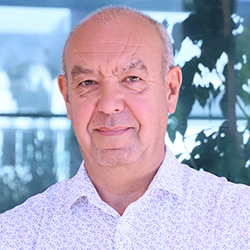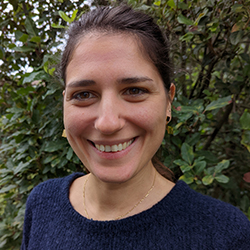University of Montpellier
University of Montpellier (UM) gathers around 50,000 students and 4800 staff members with an overall budget of 385 million euros. Research at UM is structured into 72 laboratories most of which are in partnership with well-recognized French research organizations such as CNRS, INSERM, IRD, INRA or CIRAD. UM has 16 technology platforms and services centers offering access to the state-of the-art research facilities for its researchers and research groups. Since 2017, UM was part of an “I-SITE initiative” (Initiative Science Innovation Territories Economy) aimed to develop in France, thematic research-universities based on their international and scientific recognition in research, training and innovation. The project was successfully and definitely labelled in march 2022 as a “Programme d’Excellence I-SITE (PEI)” which now gathers 16 institutions which have together shown their capacity to build a leading university in France and Europe. UM possess also since 2015 the “HR Excellence in Research” award from the European Commission (EC) for its Human Resources Strategy for Research (HRS4R). This award acknowledges the university’s efforts to align its Human Resources policy for researchers with the principles of the European Charter for Research and Code of Recruitment. Among various topics, the strategy concern recruitment, career management, specific needs of the research profession, support for national and international research projects, and PhD student supervision. UM was the first French university to receive this distinction. UM has a considerable experience in the implementation and management of doctoral and post-doctoral programs, as we have hosted or currently host several EU-funded Marie Curie and ITN doctoral and postdoctoral fellows. UM welcomes about 1,800 PhD students in its 9 Doctoral School. 50% of these early stage researchers come from abroad, confirming UM attractiveness and international reputation.
Design of Membrane Materials and Multifunctional systems group
The “Design of Membrane Materials and Multifunctional systems (DM3)” group at the European Institute of Membranes (Institut Européen des Membranes, IEM) aims to develop innovative materials to address important challenges at the practical and societal levels, inducing gas separation, water recovery, hydrogen production and electrosynthesis of e-fuels such as ammonia and hydrocarbons from nitrate and CO2, respectively. DM3 has about 50 people, including 18 permanent researchers and professors specializing in low-dimensional materials (0-2D), inorganic polymer precursors, metallic organic structures and zeolites. Within ECOMATES, the group will develop metal catalysts with improved selectivity for multicarbon products and prolonged activity. The catalysts will be synthesized, characterized and tested in different electrolyzers (H cells and flow cells).
Research Team
The group involved in ECOMATES is composed by three permanent researchers (1 CNRS researcher and 2 Ass. Prof/Prof.) from the University of Montpellier. The team has expertise in the design of electrocatalysts and their characterization, notably using ex-situ and operando spectroscopy and will host and supervise DC3. The senior researchers composing the team are:
 |
Damien Voiry, CNRS researcher. He is the local coordinator of the project and has experience in low dimensional materials, electrocatalysis, in particular in the CO2 reduction reaction.
|
 |
Philippe Miele is professor at the Ecole Nationale Supérieure de Chimie de Montpellier (ENSCM, UM) and he is expert in polymer derived ceramics and boron nitride.
|
 |
Chrystelle Salameh is associate professor at the Ecole Nationale Supérieure de Chimie de Montpellier (ENSCM, UM).
She is expert in additive manufacturing, ceramics and heterogeneous catalysis.
|
Infrastructure
The main facilities at UM consists of H-cells, flow cells and MEA cells up to 25 cm2 connected to several electrochemical workstation equipped with electrochemical impedance spectroscopy, boosters up to 20 A and coupled with an in-line gas chromatograph. The UM partner has a complete set of equipment for the characterization of materials and the study of the reaction mechanism, including operando techniques. The list of equipment includes scanning electron microscopy equipped with energy dispersive X-ray spectroscopy, X-ray diffractometers, Fourier transform IR spectroscopy, Raman, BET, TGA and DSC. Operando Raman and infrared spectroscopies are available and dedicated to CO2RR research. Other equipment such as XPS, EPR, high-resolution electron microscopy and AFM are available on the UM campus.

